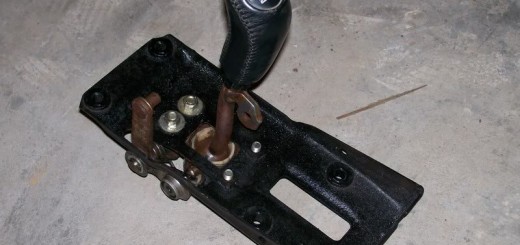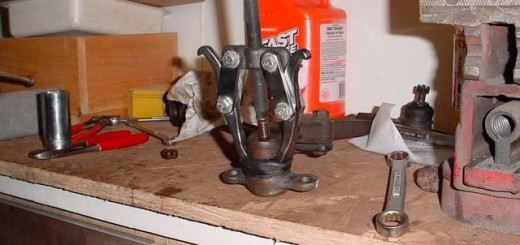Pat decided to use Evan’s NPG+ as a coolant in hopes of preventing detonation that chronically plagues 3SGTE’s when they reach the 300 rear wheel horsepower limit. Pat is going to be using a GT-30 Turbo Kit from Extreme Boost, and he intends to run around 300rwhp with it.
In order to switch from regular antifreeze/water (Ethyl Glycol system) to a non aqueous NPG+ (Propylene Glycol system), you must get rid of 100% of the H20 in the old system. In order to do this we decided to flush the system out 2 times, first wih Sierra brand coolant (Proplyene Glycol also) to flush out the old antifreeze/water, and second use the NPG+ to flush out the Sierra. You can get Sierra from most auto parts stores. We reccomend 4 gallons, so you have a little left over in case of a spill, or a leak, etc. Also please note that you need to run NPG+ with a 160 degree thermostat in order to have temperatures that are close to stock. See this page for more info Water Temp Testing

“LET’S GET READY TO RUMBLE!” 
1st, source the 2 service hoses from behind the spare tire rear cover. These should be in your car, if not, go and get a few feet of hose from a Home Depot type store. 
The 1st hose goes on the Radiator service valve. 
We used tape to hold it vertical. 
The 2nd hose goes on the heater core system service valve. Suspend it just like the 1st hose. 
Your car should look a little like this. 
Drain coolant: 1st, pull the pressure cap off in the engine bay to allow the coolant to flow more easily. Now, reach under the car near the passenger side of the radiator facing forward. Place any type of hose over the radiator drain, and unscrew the valve with your thumb and strongest finger, and drain the coolant into a garbage bag lined bucket, or other safe coolant storage sytem. 
Now, it’s time to undo the two service hose valves. Loosen the 1st valve (radiator top) with your hand until coolant begins to run up the service hose. The 2nd valve can be opened by turning the white plastic knob with a broad flathead screwdriver. Turn it as the 1st one until coolant rises up the hose. Leave them both open until the entire flush procedure is complete. 
Now, jack the rear of the car up pretty high to make your life easier. Be safe and use jackstands. 
Looks like it’s doing a kickout to me. 
Underneath the car, remove the mid rear plastic under carriage cover. Their are a few 10mm bolts and one nut. 
Here are the two 12mm mid system drains. Place the bucket under them, and we reccomend you wear eye protection, and close your mouth as you loosen each 🙂 
Finally, underneath the engine, there is a 14mm drain bolt. It is located underneath the turbo VSV (you know, the thing you plugged to get your boost controller to work!) 
Now we are ready to flush the heater core system. This is vital for a complete system flush. To make things easier, we suggest you pull your intake off near the turbo. 
Remember to remove the connector from the AFM at the clip, and not the two screws, otherwise you’ll be destroying an expensive ($750?) piece of hardware. 
Now would be a great time to clean or replace your filter.  It’s time to flush the heater core, first, close the heatercore service valve up front to allow pressure from your gravity flush to push coolant out of the heater. With the intake removed from the previous step, you can now can get at the two heater system hoses. Inlet and outlet. To pop these guys off, you may have to resort to yelling at the car (it is tough). That seems to be an important part of this step. We used flathead screwdrivers and Pat’s favorite tool, the 90 degree bend large pliers. FUN!
It’s time to flush the heater core, first, close the heatercore service valve up front to allow pressure from your gravity flush to push coolant out of the heater. With the intake removed from the previous step, you can now can get at the two heater system hoses. Inlet and outlet. To pop these guys off, you may have to resort to yelling at the car (it is tough). That seems to be an important part of this step. We used flathead screwdrivers and Pat’s favorite tool, the 90 degree bend large pliers. FUN! 


We recommend you use a system similar to this to flush the heater core. We used an old oil filler cup and ran the hose into the top of 2 heater core hoses, and let the bottom one drain into the bucket. 
Another angle. We used about 3/4 of a gallon of coolant to flush this system. You can tell when you’re done by watching the color of the fluid coming out of the lower hose. Once it changes color completely, you’re done flushing. When done, reattatch the hoses. Make sure to open up the heater core service valve up front now. 
It’s a good idea to make sure your overflow bottle is empty. We used a cheap bottle pump from the local auto parts store. 
Cheerios in the bucket are necessary to keep the coolant from eating through the plastic………… Just joking! 
Once done, we decided to modify the overflow bottle cap like this to ensure no water is pulled back into the new NPG+ System. 
This step is not necessary if you are just flushing your system with regular coolant. All we did was remove the center hose that goes into the bottle. 
At this point, it’s time to get ready to fill the system up. Get under the car, and put the 14mm engine drain bolt back in. Move to the middle, and put the to 12mm middle system bolts in. Move up front, and tighten up the radiator drain valve. Leave the service hoses open to the air.
Remove the pressure cap, and begin filling. Watch the top of the system for overflow. It will happen, as the system fills very slowly, and backs up from time to time. Once the hoses up front are to the level of the rear pressure cap you can put the cap back on, and start up the car. Let it run for a few minutes until the temp gauge starts to rise. Turn the car off, check for leaks, and look at the level of the service hoses. If they are low, add more coolant. Repeat this a few times until the system won’t take any more. You may now want to take a short drive to verify stability, just keep one eye on the temp gauge. If it goes above half way, their is a problem, since the 3SGTE will never read above half way unless their is something very wrong. “Don’t forget to bring a towel”, and a your tools and a bottle of coolant. 
Properly filled system. 
Take another drive to your local auto store, and drop off the coolant. Call ahead first, as not all stores can dispose of coolant. 
Time for a bath! 
SWEET! 



This documentation in no way replaces the Toyota MR2 Repair Manuals. The purpose of this content is only to provide supplementary information to fellow MR2 enthusiasts. Midship Runabout and its contributing authors will not be held responsible for any injury or damages that may occur as the result of practicing any of the methods or procedures described within this website. Article and photo submissions are property of the contributing author.


